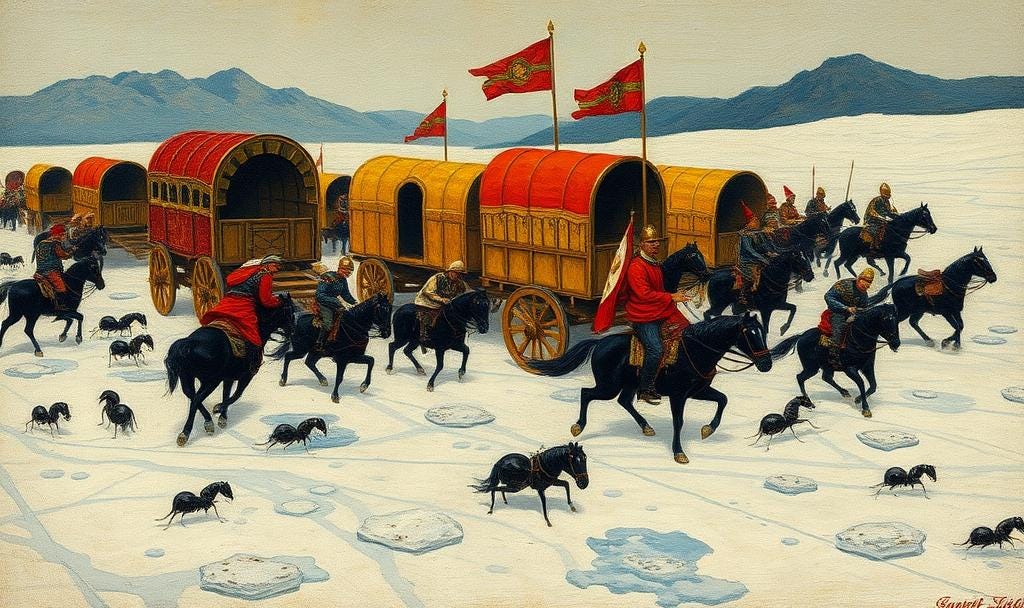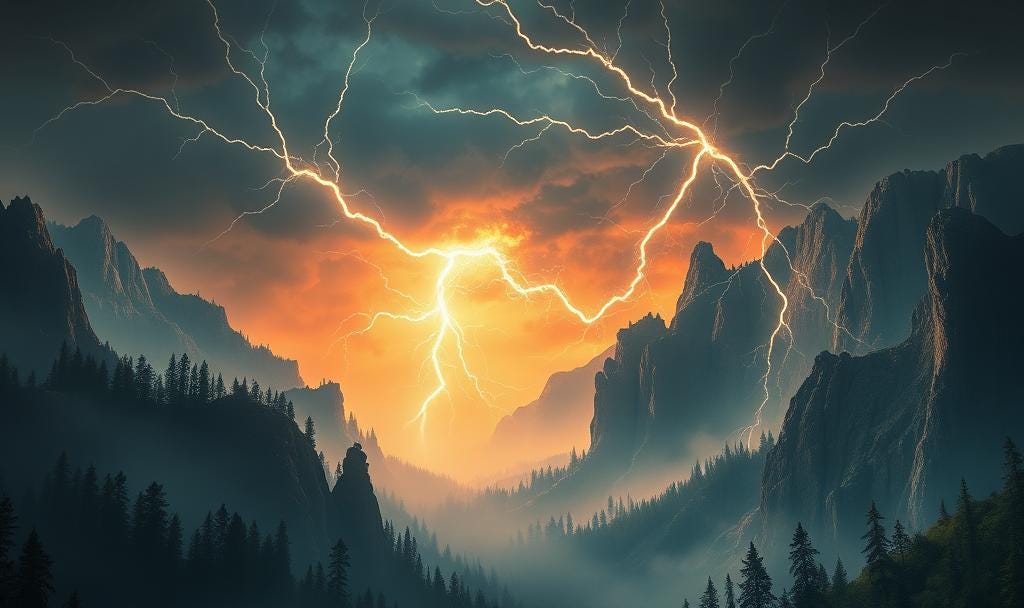The Four Century War
Conclusions on the Infographic Project American History 1492-1890
The Past
To justice. May an understanding of historic conflict … contribute to wise and fair resolutions for present conflict. - Duane R. Lund PHD.
Some have referred to these battles as one Four Hundred Year War (1492 to 1890). Cheyenne Black Kettle said, ‘There are bad white men and bad Indians. The bad men on both sides brought the trouble. - William M. Osborn.
As Passaconaway predicted, the flame licked natives when they sparked with the English until burnt.(1) Starting with the story of Pierre Verendrye on. (2)
Reframed from war culture to justice. Approximate justice means close enough. Approximate justice creates feud states where cycles of back-and-forth reprisal and score settling continue indefinitely. In these conditions then when bad people do things - like steal cattle and murder the people who report it to the authorities, then something must be done. Approximate justice means hit back close enough. The idea of approximate justice is that bad people will be turned out when their bad act brings retribution back onto their people and be less generally tolerant of deviants at the outset because of it. Its crude and like a ground bound flame never extinguishes. (3)
Eagle Law
“It is common for an Indian to be shot down in cold blood or a woman (squaw) to be raped by some brute. Such a thing as a white man being punished for outraging an Indian was unheard of.” General ‘Three Stars’ Crook, describing Yreka California. Osborn. pg. 185
Natives may have inspired modern American’s sensibilities of liberty.(4)
The English and French brought civilized law. Any system of justice is a pressure valve for our innate social primate sense of justice. Absent the civilizing institutions of due process and law and the mediating presence of the state, hominids lapse into feuds and interminable simmering warfare as a natural state of social governance through approximate justice. This state perpetuates itself generationally.
This series is close to covering the key points William Osborn identifies in the 4 Century War of America. (Pennacook, Metacom, Colonial, Pontiac, Revolution, 1812 and Mexico, Trail of Tears, Civil War, Sious in Minn, Sand Creek, Fetterman Massacre, Sioux, Apache, Comanche, etc.)
There remain interesting testimonials to plumb, but the gist of the past is in place. It is here we turn to the present point. What may we learn from the past?
Observation. Nomadism. Migration is an American way of life. People move in and out of Hotel California all day. This was true of the natives and true of Americans today. No one knows why.
Power Sized by Number
“Information about the numbers of people was scanty… In September 1865, Maj. Gen. Dodge estimated there were 25,000 warriors on the plains… Estimates varied. The Plains Sioux (5,600) Arapaho (3,000) and Cheyennes (11,400) for a total of 11,400.” - Mcdermott pg. 7
This was not a lot of people. The demographics made it impossible task for the natives to win. The scale of American resources in manpower meant any equation of attrition would eventually drain them no matter how skewed the relative rates.
A lesson in power here - it did not matter there were not a lot of natives because the fighting was not about the numbers. Put it this way, to a fresh faced 19-year-old enlisted soldiers staring down the impossibly wide, deep and byzantine canyon of Apacheria and being asked to track down the people who inhabit the harsh landscape - it did not matter one bit of difference whether there were 10 million or 100 million more white people back in Boston and New York City. The disparity in demographics only assured there would always be more, not that masses of soldiers could be brought to bear easily against the natives. Any column of troops needed a column of mules and tons of supplies to feed, water and retool. The numbers of any tribes are fairly low - altogether less than a crowd at a Soccer or Cricket match in run of the mill stadiums these days - and maybe less persons than many individual Civil War battles. But the conflict of natives and whites was not a contest of power by numbers.
Present Tense Monument
Let’s stop beating around the bush. Living in the past. What’s history if not context for the present? Go out on a limb. Take a stan. Immigration & Israel. Ok. Let’s burn.
On Immigration. By the history, illegal settlement is the American way. Its true. Not debate. That may not be what people want to hear today with the buzz on the wall and illegal immigrants and all that rot. But that’s the way we have always been. Its true. By her history, America was built by people going to a place they did not belong in such great numbers they could not be easily removed and did such useful things they earned a stay. Maybe we should look at the immigration strategy in another way - modern economic conditions requires on population growth for economic growth. With declining birth rates, immigration is an advantage. It just seems anti-American to work back on this point. The part that should concern citizens is that people with illegal status is that these people fear or avoid police, so when crime happens to them, they turn to mechanisms of approximate justice for redress of grievance. This may be a 5th Amendment Constitutional question, but that is the give a path forward practical argument with historical reference. The original settlers of Denver and Tuscon Arizona were a wild bunch. They stayed. Knowing that history galvanizes my thinking and forms the core of discomfort with some of the current faddish thinking toward expulsion. Just seems against the grain of America in some way. I get a deeply uncomfortable feeling with the current disposition of President elect Donald Trump’s immigration appointee Tom Homan to wholesale throw people out of America who may have dubious immigration status. I know in my past working construction with Spanish crews, not everyone probably would have checked out on the card. But to a man they worked hard - and had to be tough, brave and smart if they came on America coyote way. That’s where study of 400-year history and personal exp. leads me to say to the present issue of immigration in America. I look askance at all the propaganda about immigrants living high on the hog in ritzy hotels. I don’t see it. What I have seen looks demagogue-ish.
With respect to Israel, American history puts us in an interesting spot. I am not sure we have any credibility to recommend a two-state solution for Israel and the Palestinians. We ourselves have so far to go and seemingly little appetite - in the present with respect to the native people and cultures and full assimilation in the power of U.S. government. It’s just a bit cringey for Americans to weigh in on the proposal of two-state solutions with Israel given where we still are in our historical arc. In a similar way, the native tribes commonly took captives. The fates of captives varied case by case. Generally captives were made slaves and suffered duress and hardship, or killed, sold as slaves, or adopted. Some escaped. No other practice seemed to unleash as much American fury upon the natives as their taking of captives. Americans burned a lot of villages and conducted a lot of massacres in response.
Reading about the native wars it occurred to me that the random, senseless acts of explosive violence and bloodletting that seem to go down all the time in modern America, like Columbine or Vegas Country music and on down the line seem in a horrible way like echoes. In my study of American history, this behavior among the natives seems inextricably wound at its core to injustice. Specifically the Americans excluded natives from any due process of law or rights - marginalizing them and driving into a war state to get redress for crimes and wrongs. I don’t know what to speculate on the modern state. Whatever the causes of the present condition of American violence at any rate, the random and chaotic mass bloodletting carry haunting parallels from the past to present.
So those are my last thoughts on America’s four century war in past, present and future - a few more Infographics on native wars are scheduled to run to finish the colonial era and Apacheria, but we have covered the core of America’s 4 Century War. Thanks for reading the series. Let’s help make America look great again. ;)
Notes
(1) https://crackpot.substack.com/t/pennacook
(2)
The story of Verendrye’s son is told in the Ojibwa chapters - summary - Shortly after arriving at Fort St. James, Pierre Verendrye’s son John Baptiste accompanies a Cree war party on Sioux lodges. Baptiste appears to be naive about what his participation means to the Crees enemy, the Dakota Sioux. The war party does some damage to Sioux lodges and returns without casualty. A few months later payback hits. A Sioux party recognize Baptiste out on an expedition and hit the whole party of 21 French soldiers including JB. By taking part in a war party, Baptiste became a marked man. This started 130 (at least) years of war in Minnesota before the Sioux were finally driven out.
(3) Theft & Murder - referencing the last Blackfoot war party is mostly successful - the minor detail they kill the member of the wrong tribe. (An Assiniboin rather than Gros Venture, who took the scalps of Blackfoot who were riding to the Montana Agency to report the theft of stock.)
(4)
https://crackpot.substack.com/t/ojibwa
(3) On reframing war culture as justice -
Other thoughts on the civilizing influence of native governance on the European monarchist
References
Utley, Robert M, and Wilcomb E Washburn. Indian Wars. Boston Mass., Houghton Mifflin, 2002.
Lund, Duane R. The Indian Wars. Cambridge, Minn., Adventure Publications, 1995.
Osborn, William M. The Wild Frontier. Random House, 18 Nov. 2009.












